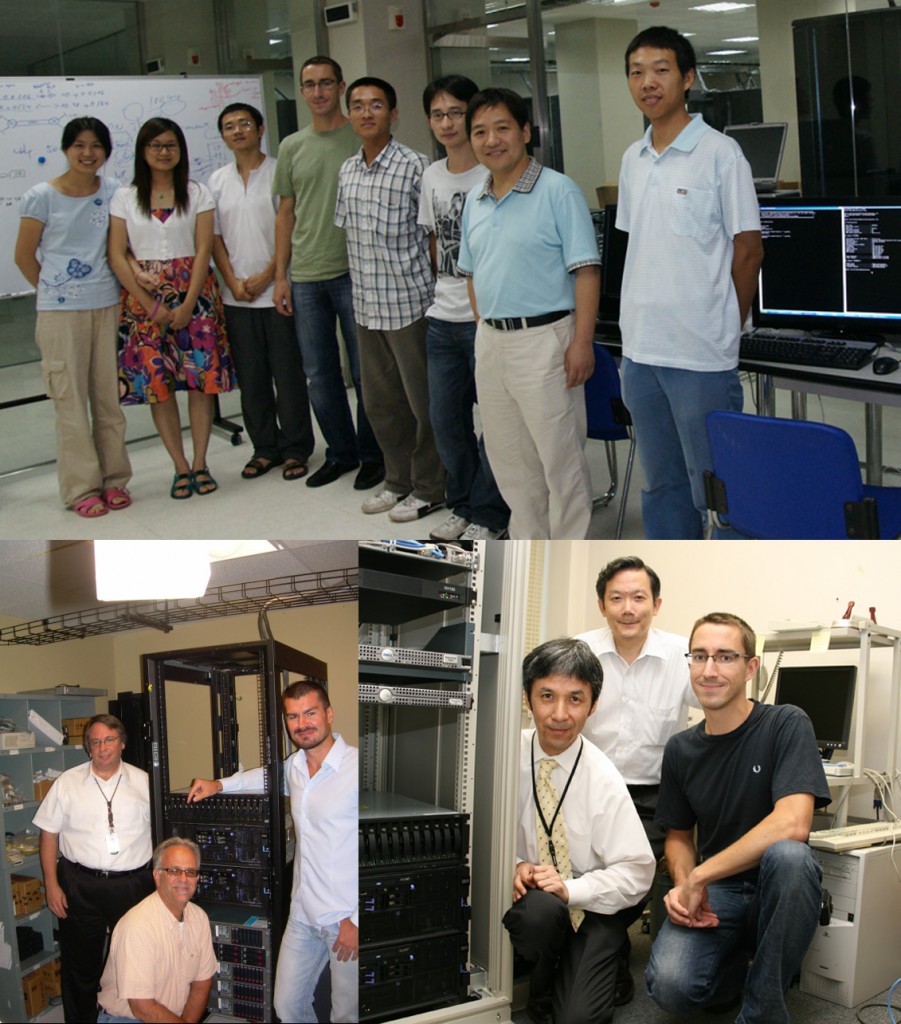ITER NEWSLINE
95
Setting up a global IT infrastructure
Sabina Griffith
Setting up a global IT infrastructure

Top: Song Yuntao (Chinese Working Group IT) with Bjoern Wilhelm (ITER) and a team of Chinese IT specialists. Left: Benjamin Kelmers, Daniel Ciarlette (US ITER) and Jürgen Dirnberger (ITER). Right: Bjoern Wilhelm with Koichi Sato, and, standing in the middle—ITER Japan leader Ryuji Yoshino.
One of the first "clients" to use this new network is the Design Office. The satellite servers allow the ITER CAD designers spread around the globe to access and to process the same 3D-datasheets. What formerly took a CAD designer in China about 60 minutes—opening a data-file for a specific tool of the machine only to find out that it wasn't the right one—now takes him a minute.
In May this year, the first IT satellite at the Indian Domestic Agency was installed, followed over the past couple of weeks by the Domestic Agencies in China, Japan, and the US. Next week, ITER IT specialist Björn Wilhelm will travel to Korea in order to set up the infrastructure there. The last element, the Russian Domestic Agency, will get its servers and thus close the circle by the end of September.
return to Newsline #95


